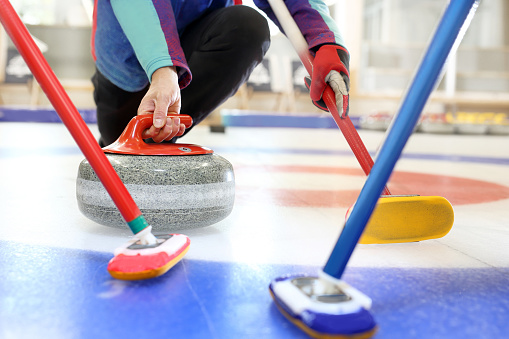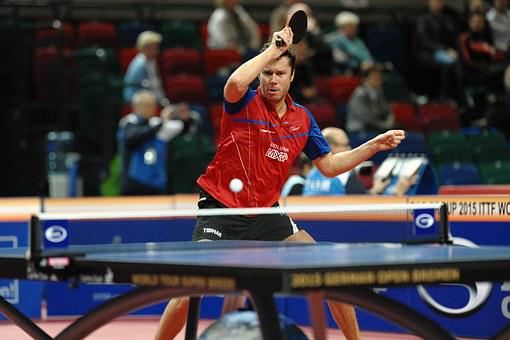General Rules of Intercrosse
When playing intercrosse, make sure you have the right gear for safety – eye goggles and mouthguards are essential. Choose a stick that fits your style. Comfortable shoes and a water bottle are a necessity. Field dimensions, player positions, and team communication play critical roles. Offensive tactics involve moving into space; defense requires close marking. Goalie positioning and shooting techniques impact team performance. Stay fair to avoid penalties like high sticking. For beginners, focus on basics, equipment, and skill-building exercises. Master these rules to excel in this dynamic sport.
Equipment Needed for Intercrosse
To play intercrosse, you will need essential equipment for a safe and enjoyable experience. Safety precautions are essential; wearing proper attire like comfortable athletic clothing and non-marking shoes is a necessity. To protect yourself during gameplay, consider using protective gear such as eye goggles and mouthguards. Making sure that all equipment fits well and is in good condition is crucial for both safety and performance.
When it comes to equipment maintenance, regularly check your intercrosse stick for any signs of wear and tear. Ensure that the netting is secure, and the shaft is not cracked or damaged. It's also crucial to clean your stick after each use to prolong its lifespan. Investing in a quality stick is key; consider factors like material, weight, and grip when purchasing one. A well-maintained stick can have a significant impact on your game.
In your buying guide, look for reputable brands that offer durability and performance. Online reviews can provide valuable insights into the best equipment options available. Additionally, consider the rules and regulations of intercrosse regarding equipment specifications to make sure compliance during matches.
Field and Team Setup
Setting up the field and organizing your team are pivotal steps in preparing for a game of intercrosse. The field dimensions in intercrosse are usually 40 meters in length and 20 meters in width. It is divided into two halves by a center line, with a goal at each end. Each goal is 1.5 meters wide.
When setting up your team, you need to assign players to different positions based on their strengths and skills. In intercrosse, there are three main player positions: attackers, midfielders, and defenders. Attackers are responsible for scoring goals, midfielders play both offensively and defensively, and defenders focus on preventing the opposing team from scoring.
A typical intercrosse team consists of six players on the field at a time: three attackers, two midfielders, and one defender. However, teams can adjust their formations based on their strategy and tactics. Communication and coordination among team members are pivotal for success in intercrosse.
Understanding the field dimensions and player positions is essential for creating a cohesive and effective team. By organizing your team strategically and utilizing the field to your advantage, you can increase your chances of winning games and enjoying the fast-paced action of intercrosse.
Basic Gameplay Rules
Engage in the dynamic sport of intercrosse by familiarizing yourself with the basic gameplay rules. In intercrosse, player positioning is vital for both offensive strategies and defensive techniques. Understanding how to position yourself on the field can greatly impact your team's performance. Here are some essential rules and strategies to keep in mind:
| Player Positioning | Offensive Strategies |
|---|---|
| Spread out across the field to create passing lanes and opportunities. | Work on quick passes and movement to confuse the defense. |
| Communicate with your teammates to coordinate plays and create openings. | Utilize screens and picks to free up space for shots. |
| Maintain a balance between attacking and defending to support your team effectively. | Practice shooting accuracy and power to increase scoring chances. |
| Stay agile and be ready to switch between offense and defense swiftly. | Develop an understanding of your teammates' playing styles to enhance teamwork. |
| Adapt your positioning based on the flow of the game and the opponent's strategies. | Be proactive in creating scoring opportunities through strategic positioning and movement. |
To excel in intercrosse, honing your passing skills through drills is essential. Passing efficiently and accurately can lead to successful plays and scoring opportunities. By mastering defensive techniques, such as stick checking and marking opponents closely, you can disrupt the opposing team's rhythm and regain possession. Remember, a well-rounded player who understands player positioning, offensive strategies, defensive techniques, and passing drills is key to achieving success in intercrosse.
Scoring in Intercrosse
Understanding the scoring mechanics in intercrosse is essential for maximizing your team's performance and securing victory on the field. Scoring in intercrosse involves a combination of offensive tactics, shooting techniques, and strategic goalie positioning and defensive strategies. Here are some key points to keep in mind:
- Goalie Positioning: The goalie plays a vital role in preventing the opposing team from scoring. Proper positioning, quick reflexes, and good communication with the defense are essential for a strong defensive line.
- Defensive Strategies: Effective defensive strategies involve marking opponents closely, intercepting passes, and disrupting the opposing team's offensive plays. A well-coordinated defense can help limit the opponent's scoring opportunities.
- Offensive Tactics: Offense in intercrosse requires teamwork, quick ball movement, and smart positioning to create scoring chances. Players should look for openings in the defense, set up picks, and communicate effectively to execute successful offensive plays.
- Shooting Techniques: Shooting accuracy and power are key elements of scoring in intercrosse. Players should practice different shooting techniques, such as wrist shots, slap shots, and bounce shots, to keep the goalie guessing and increase the chances of scoring.
- Teamwork: Ultimately, scoring in intercrosse is a team effort. By working together, communicating effectively, and executing both offensive and defensive strategies, your team can increase its chances of putting points on the board.
Penalties and Fouls
To grasp the dynamics of intercrosse gameplay fully, familiarize yourself with the various penalties and fouls that can impact the flow and outcome of the match. Ensuring vital play and sportsmanship is essential in intercrosse, and understanding the penalties and fouls will help you navigate the game smoothly. Here's a breakdown of common infractions and their consequences:
| Violation | Description |
|---|---|
| High Sticking | Occurs when a player raises their stick above their waist level, leading to a free hit for the opponent. |
| Body Checking | In intercrosse, body checking is not allowed, and violating this rule results in a penalty shot for the other team. |
| Holding the Stick | When a player holds onto an opponent's stick, it leads to a turnover or a free hit for the opposing team. |
| Unsportsmanlike Conduct | Any behavior that goes against the spirit of the game, such as verbal abuse or intentional fouls, can result in a player being ejected from the match. |
Player conduct and sportsmanship are at the core of intercrosse, and respecting these values enhances the overall experience for everyone involved. Referee decisions play a vital role in maintaining game flow and ensuring fair play. By understanding and abiding by the penalties and fouls, you contribute to a positive atmosphere where competition thrives within the boundaries of respect and integrity.
Tips for Beginners
Ready to kickstart your Intercrosse journey? Let's talk about the essential equipment you'll need, get a grasp of the basic rules, and explore some skill-building exercises to hone your game. These key points will lay a solid foundation for your introduction to this exciting sport. So, gear up, familiarize yourself with the basics, and get ready to elevate your Intercrosse skills!
Equipment for Beginners
Considering embarking on your journey in Intercrosse? Getting the right equipment is crucial for beginners to enjoy and excel in this fast-paced sport. To help you kickstart your Intercrosse experience, here are five essential items to contemplate:
- Protective Gear: Invest in a good quality helmet, gloves, and shin guards to guarantee your safety on the field.
- Intercrosse Stick: Find a stick that suits your playing style and skill level, ensuring a comfortable grip and good control.
- Comfortable Shoes: Opt for lightweight, durable shoes with good traction to enhance your performance during games and practice drills.
- Water Bottle: Stay hydrated during intense training sessions and matches to maintain peak performance.
- Training Jersey: Wear breathable clothing that allows for easy movement and comfort during gameplay.
Equip yourself wisely and enjoy the thrill of Intercrosse!
Basic Rules Overview
Getting familiar with the basic rules of Intercrosse is essential for beginners looking to navigate the game successfully and enjoy their playing experience. In this overview, let's discuss key strategies and common mistakes to watch out for. Understanding offensive strategies, such as moving into space to create scoring opportunities, and defensive tactics like marking opponents closely, are vital aspects of the game. Advanced techniques like feints and quick passing can help elevate your gameplay. Positioning drills can improve your overall game awareness on the field. Remember, effective team communication is key for successful gameplay. By mastering these elements, you'll be well on your way to becoming a skilled Intercrosse player.
Skill-Building Exercises
As you embark on your journey to enhance your Intercrosse skills, incorporating skill-building exercises tailored for beginners can greatly elevate your gameplay prowess. Here are some tips to help you improve your skills:
- Coordination Drills: Engage in exercises that focus on enhancing hand-eye coordination to boost your overall performance.
- Teamwork Activities: Practice with a partner or a team to develop your understanding of how to collaborate effectively with others on the field.
- Passing Techniques: Work on your passing precision and speed to guarantee smooth shifts and keep the game flowing.
- Shooting Drills: Practice various shooting techniques to enhance your scoring ability and precision during games.
- Footwork Exercises: Improve your agility and speed by incorporating footwork drills into your training routine.
Frequently Asked Questions
Can Players Wear Any Type of Shoes for Intercrosse, or Are There Specific Requirements?
You can wear various types of shoes for intercrosse. Sneakers provide flexibility and comfort, while cleats offer better traction. Consider the playing surface – sneakers are versatile, cleats might restrict movement. Choose what suits you best.
Are There Any Restrictions on the Length or Weight of the Stick Used in Intercrosse?
When playing intercrosse, stick length and weight restrictions are essential. Safety regulations govern these guidelines to guarantee fair play and protect players. Following equipment guidelines enhances your game experience and promotes a level playing field.
Are There Any Age Restrictions for Participating in Intercrosse?
Yes, there are age restrictions for participating in intercrosse. Different leagues or tournaments may have specific age groups for players. Equipment requirements typically include a stick, ball, and protective gear like goggles.
Is There a Specific Number of Players Required to Form a Team in Intercrosse?
To form a team in intercrosse, you typically need 5 players on the field at a time. Positions include goalie, defenders, and attackers. Substitutions can be made freely. Games usually last 2 halves of 20 minutes each.
Are There Any Specific Strategies or Tactics That Are Commonly Used in Intercrosse Games?
When playing intercrosse, offensive strategies like setting picks and creating space help your team score, while defensive tactics such as marking opponents tightly and intercepting passes aim to stop the other team.
Conclusion
Now that you know the general rules of intercrosse, grab your equipment, set up your field, and start playing! Remember to score by shooting the ball into the goal and watch out for penalties and fouls. As a beginner, focus on the basics and practice your skills. With time and dedication, you'll become a pro at this exciting sport. So get out there and have fun on the intercrosse field!






